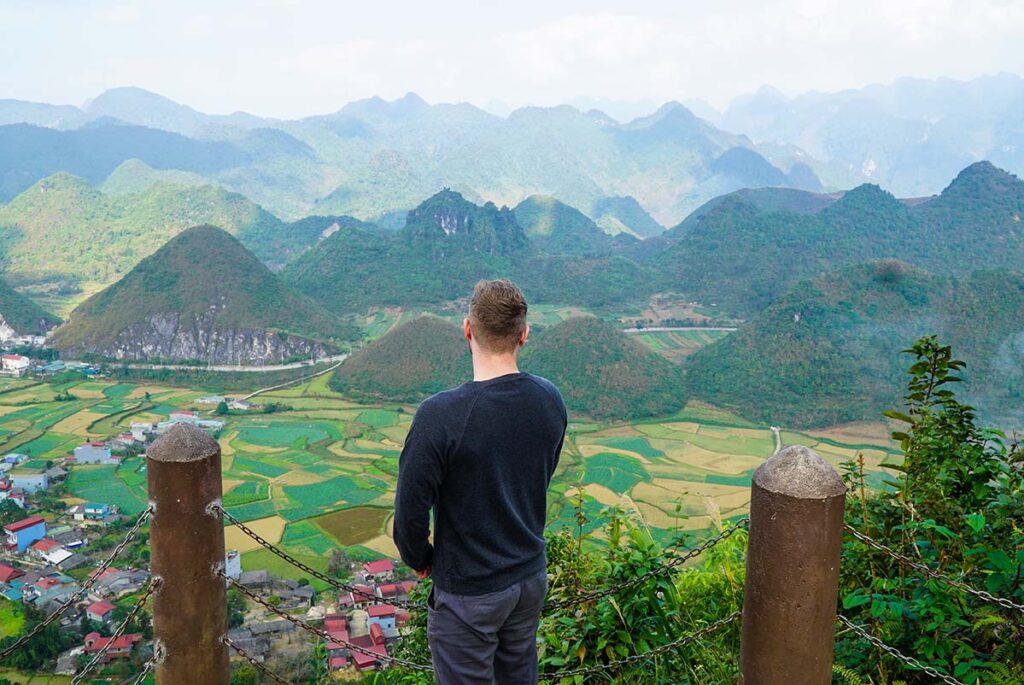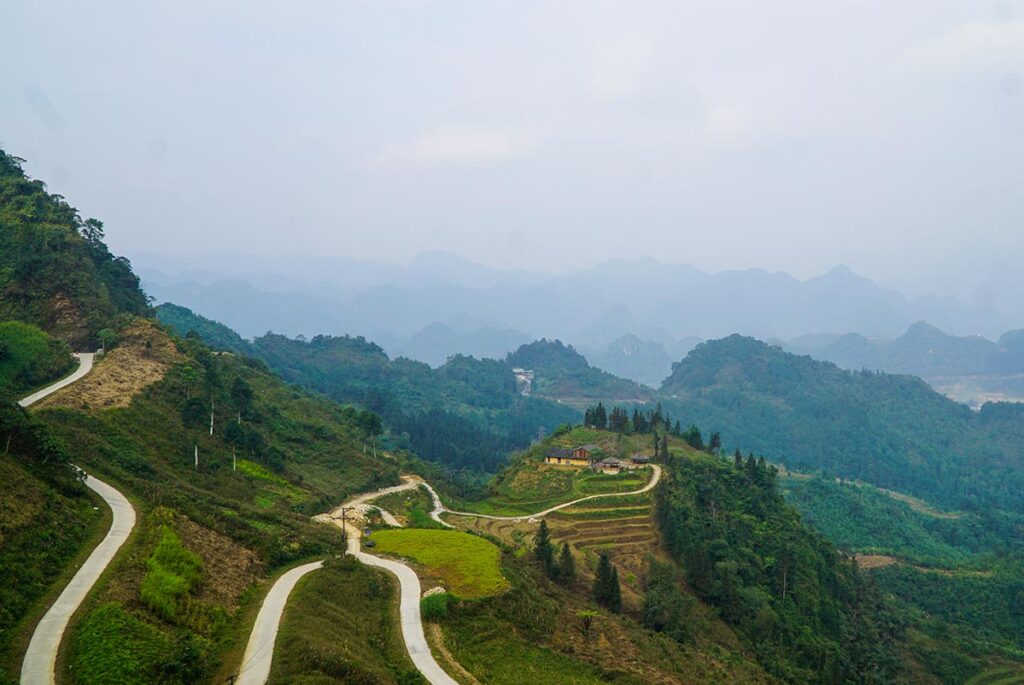Scenery of Quan Ba Twin Mountain
Nestled in Quan Ba District within Ha Giang Province in northern Vietnam, near the border with China, the Quan Ba Twin Mountain stands as a striking natural wonder. As its name suggests, this captivating landmark comprises two nearly identical mountains situated side by side. The distinct breast-like contours, intertwined with the ethnic Hmong legends, have earned it the affectionate moniker “Fairy Breast Mountains.”
These mountains, with their round and symmetrical profiles, have become an iconic and captivating sight, forming an silhouette against the backdrop of lush greenery, rolling hills, and majestic mountains. They have gained fame as a notable stop on the Ha Giang Loop, a journey that allows travelers to explore the province’s highlights within a span of 3 to 5 days.
To catch the best view of the Twin Mountains, you must ascend to the viewpoint located midway down the Quan Ba Pass. Positioned about 2 kilometers from the peak, while heading toward Tam Son Town, a designated parking area is on your left side, with a staircase leading to the viewpoint. It’s important to note that if you’re driving independently without a guide, the viewpoint could be easily missed, because the view isn’t directly visible from the road.

After climbing the staircase, a panoramic panorama view reveals the breathtaking Twin Mountains. Take your time to immerse yourself in the scenery and capturing photographs.
The legend of the Fairy Breast Mountains
The Twin Mountains, often referred to as the Fairy Breast Mountains, are steeped in a local Hmong legend. According to the tale, a skillful Hmong man’s enchanting whistle captured the heart of a fairy who descended from the skies to be with him. However, the Jade Emperor discovered her absence and reclaimed her, yet she had already given birth to a child from the Hmong man. To provide sustenance for her offspring, she left behind her breast, which eventually evolved into the twin mountains that we see today.
The Quan Ba Pass

As previously mentioned, the viewpoint showcasing the Twin Mountains is situated midway down the Quan Ba Pass, known as Quan Ba Heaven Gate, as you make your way towards Tam Son Town. The summit of the pass itself is equally alluring, with stunning views of the Ha Giang mountains.
Additionally, a cozy coffee shop awaits, allowing you to savor a refreshing drink while taking a moment to enjoy the breathtaking scenery.
How to get to the Quan Ba Twin Mountain?
Situated within Quan Ba District of Ha Giang Province, the optimal approach to experiencing the beauty of the Quan Ba Twin Mountains is by incorporating it into your Ha Giang Loop itinerary. This loop typically spans 3 to 5 days and encompasses a range of other breathtaking attractions across Ha Giang.
Commencing from Ha Giang City, the starting point of the loop, the journey to this city is most conveniently undertaken from Hanoi. Options include overnight sleeper buses or daytime limousine buses, with travel time averaging between 6 to 7 hours.
Upon arrival in Ha Giang City, you can initiate your loop adventure via self-motorbike riding, opting for a motorbike with a guide, or by selecting the comfort of a car accompanied by a driver.
Other things to do and see
While the main highlights of Quan Ba revolve around the Quan Ba Pass and the striking viewpoint halfway down over the Twin Mountains, there’s more to explore beyond these. Once you’ve descended into the valley, you’ll uncover charming destinations that are well worth a visit.
Should you have the time, consider traversing the lesser-traveled roads skirting the river coursing through the valley. This path not only treats you to captivating riverside panoramas against a backdrop of mountains and rural landscapes, but also introduces you to small ethnic minority villages. Venturing into these villages provides a unique opportunity to immerse yourself in their local culture.
In close proximity to the Twin Mountains, lies the Lung Khuy Cave, an attraction worth exploring. Although not the largest cave, it still offers an engaging experience, further enhanced by the picturesque journey leading up to its entrance.

